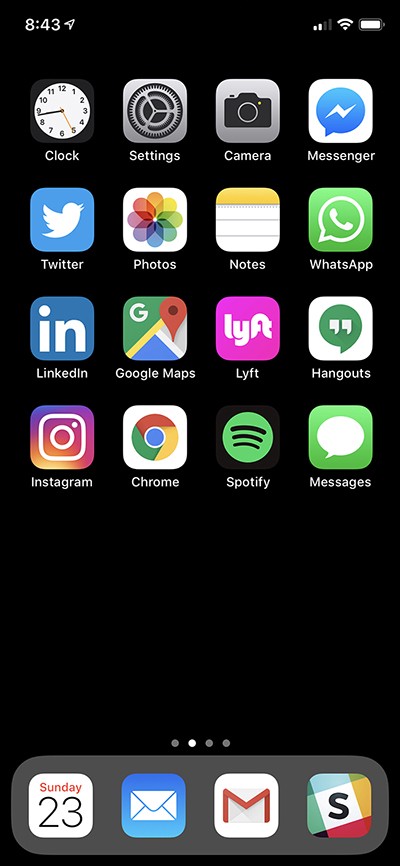Jan 29
The other day a coworker and I were chatting about our phone’s home screens and the way we organize our app icons. We spent good ten minutes describing to one another our implicit rules on how we prioritize homepage icons, how we choose apps that will sit on the edge vs. the middle of the screen, how we thoughtfully select the ones that will stay fixed on the bottom dock. We were verbally documenting our own unspoken rules on how we had “designed” our phone home screen experience.
Here’s where I stand as of today:

- I try to limit the number of icons displayed on my homepage to the ones I use every day. The rule is simple: if I haven’t used an app for more than 3 days, I move it to another page. The fact I have less information to look at helps reduce cognitive load 100% of the times I unlock my phone.
- I removed all red badges from the homepage icons (except Slack and work email) to reduce anxiety and the feeling that I need to click on certain icons in the first place — because I really don’t. I noticed my phone usage has drastically dropped since I changed that setting.
- Since I realized I’m often holding my phone with my right hand, I moved icons that I need to access quickly to the right side of the screen, so it’s more easily accessible with my thumb. I don’t really need to open Twitter, Linkedin, or Instagram when I’m walking outside holding my phone with one hand and trying to cross a busy street.
The list goes on forever.
I have rules around how my phone’s second screen is organized as well.
I could write a whole book on the little things I do to optimize my day-to-day experience — not only with my phone, but with my laptop, with my wardrobe, office desk, electric chargers, fridge, backpack. But in all honesty, that would be an incredibly boring book.
The specific rules are not the point (I am not trying to convince you my rules are the right ones, or that they will work for you, and I actually hope you disagree with some of them).
The point is: taking the time to think through what those rules are, and how they are going to impact your everyday.
Why are we not doing the same thing with every single aspect of our lives?
Isn’t that exactly what design is?